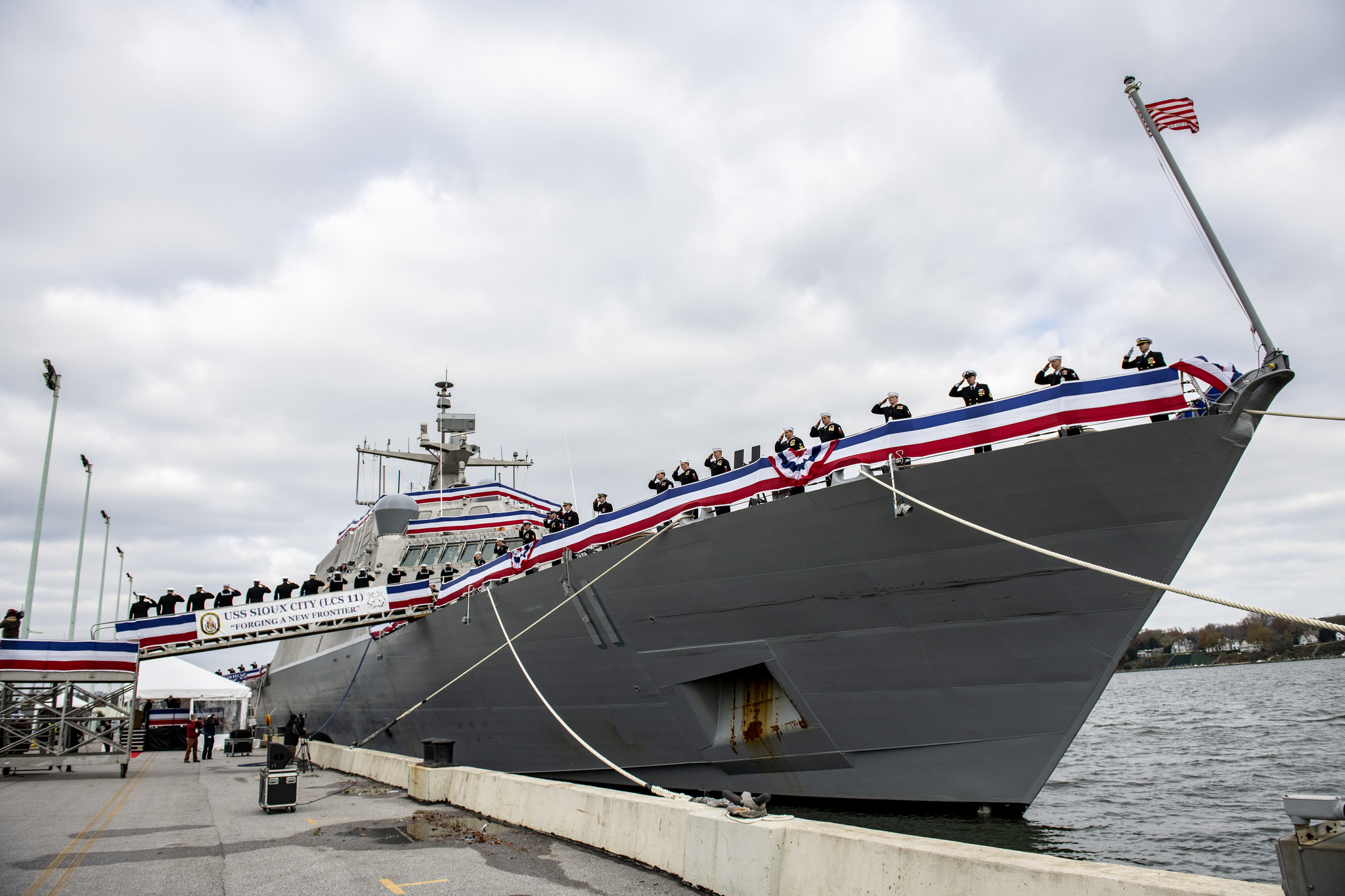The Lockheed Martin-built USS Sioux City (LCS-11), the country's 13th commissioned littoral combat ship (LCS), has been commissioned into active service in a ceremony at the U.S. Naval Academy.
Jim Murdoch, director of business development for small combatants at Lockheed Martin, says the LCS is conceived as a fast, flexible, and reconfigurable warship to replace the U.S. Navy's patrol gunboats, mine countermeasure (MCM) ships, and the Oliver Hazard Perry-class frigates, which performed multiple duties including anti-submarine warfare (ASW). Lockheed Martin builds odd-numbered hulls in the Navy's LCS program, while Austal builds even-numbered hulls.
Murdoch points out that USS Sioux City is designed to complete close-to-shore missions. The ship is fast, capable of speeds in excess of 40 knots, compared with a typical Navy destroyer or frigate, which generally make 30 knots, he says. Its speed allows the ship to reposition in an operational area more quickly and offers commanders more tactical capabilities.
"USS Sioux City has a more capable propulsion plant in terms of speed," Murdoch says. "It has both gas turbine engines and main propulsion engines for cruising speeds that operate four water jets. The ship is better for high speeds and its overall effective draft is less than typical."
He notes 40 percent of the space inside USS Sioux City is reconfigurable, allowing different mission packages to be put aboard depending on the mission for deployment.
"The most common mission package is for surface warfare," Murdoch says, "where the Navy will be employing the LCS to counter other small surface ships or small boats and other craft. "The other mission packages are ASW, where sonar packages would be installed, and mine countermeasures."
USS Sioux City also will carry a MH-60R helicopter and be standardly equipped with rolling airframe missiles and a 57-millimeter Mark 110 gun capable of firing 220 rounds a minute. When outfitted for a surface warfare mission, it also would integrate capabilities like Longbow Hellfire missiles, 30-millimeter guns, and manned and unmanned vehicles targeted to meet 21st-century missions.
Murdoch points out USS Sioux City is "very well automated, using a machinery control system that monitors all the systems on the ship. It only takes three sailors to monitor and control propulsion and auxiliary machinery." Typically, one sailor would be on the bridge, one at a central control station, and a third in the mechanical spaces, he adds. The LCS will have a core crew of 40, with additional sailors and officers added depending on the mission package and for the helicopter.
"The Combat Management System software on USS Sioux City uses COMBATSS-21," Murdoch says, which is a derivation of the Aegis Combat System found on destroyers and cruisers that take radar input, develop tracks, and present recommendations on screen to an operator about a threat or threats. By developing a derivation of Aegis, Murdoch says the COMBATSS-21 software "provides a commonality across systems."
About the author: Alan M. Petrillo is a Tucson, Ariz., journalist who writes for national and regional magazines and newspapers. He's the author of several books on historical military firearms; two historical mysteries, Full Moon and Asylum Lane; and an historical thriller, A Case of Dom Perignon; all available at Amazon.com.
